Category Archives: 52 Reviews
Quiet Riot
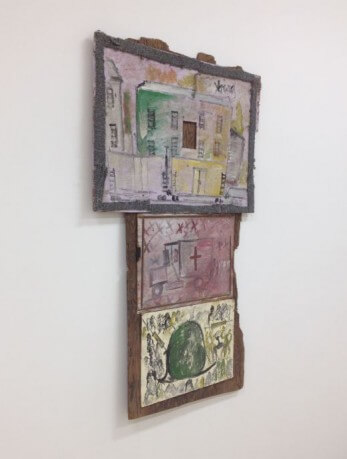
Written on March 13, 2015 at 2:49 pm, by Kara Pickman
Paintings by the artist Purvis Young depict swirled worlds of burning cities, tanks rolling to war, man-sized roaches attacking man-sized men. They’re not on clean canvases — they’re on the warped, chipped, and beautifully assembled wooden flotsam found on the streets of Miami.
La Voix Humaine
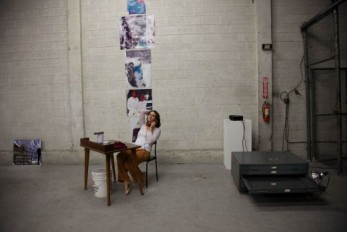
Written on March 3, 2015 at 1:31 pm, by Kara Pickman
Amanda + James
BFI
February 20, 2015
James Danner, founding director of New York–based Amanda + James, brought Francis Poulenc’s one-act opera for a soprano soloist, La Voix Humaine, to Miami over an unseasonably cool weekend in February. Before the show began, the audience, seated on the makeshift stage, or near to it, could hear downtown traffic and other nighttime noises just outside the large open doorway to BFI’s exhibition and performance space.
Made in New York
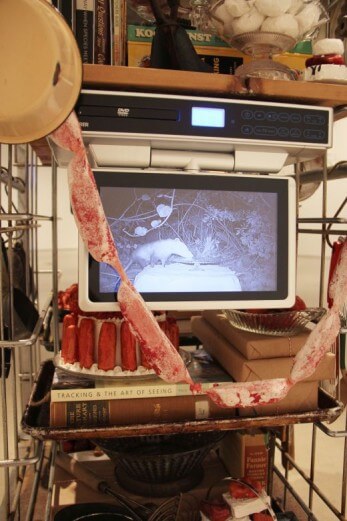
Written on February 20, 2015 at 2:50 pm, by Kara Pickman
In the Blueshift Project’s brochure for Made in New York, a group show featuring eight New York artists and curated by Robert Dimin, an effort is made to express that the works on view are separate from the “noise” that results from the contemporary art fairs that swarm Miami each December. I visited the gallery on a quiet day soon after the show’s opening and was led through it by co-director Sofia Bastidas and manager Ana Clara Silva. Each had interesting insights to share about the overall concept of the grouping, which brings together many works that address the human and animal body and–—although made in New York—issues close to home in Miami.
Laddie John Dill, Cayetano Ferrer, Michael Hunter
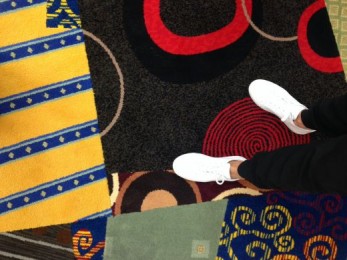
Written on February 6, 2015 at 5:33 pm, by Kara Pickman
At the opening of Michael Jon Gallery’s group show, someone kept turning off the lights. My wife thought this meant we should leave—but no, dimming the lights only makes for better viewing of Laddie John Dill’s celebrated untitled light work, which he first created in 1971 and has since been (laboriously) installed at the Venice Biennale, among other places. Showcased at the center of the gallery, mounds of sand and sediment house angular arrangements of glass panes that—when someone hits the lights—are softly illuminated from within by argon lighting just beneath the surface.
The Dazzling World of Ye Hongxing
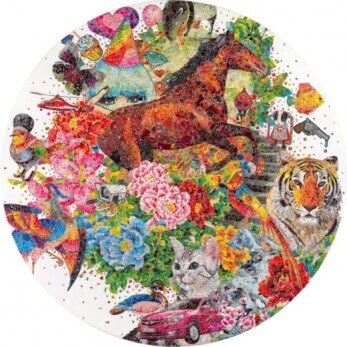
Written on February 1, 2015 at 1:07 pm, by Kara Pickman
Art Lexïng debuted its new gallery space in Miami Ironside with a solo exhibition by Beijing-based artist Ye Hongxing. Selected in 2004 by the Asian Art Museum of California and Art Cologne as one of China’s twenty top rising artists, her work has been shown at the China Art Museum, Shanghai Museum of Contemporary Art, and Art Cologne, among others.
Mary Reid Kelley with Patrick Kelley, Sadie, the Saddest Sadist and You Make me Iliad
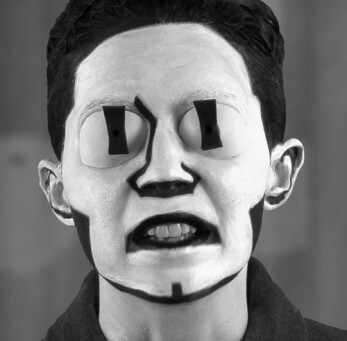
Written on January 23, 2015 at 5:24 pm, by Kara Pickman
In connection with its current exhibition Myth and Machine: The First World War in Visual Culture, the Wolfsonian–Florida International University hosted artist Mary Reid Kelley for a screening of two of her WWI-inspired videos: Sadie, the Saddest Sadist (2009) and You Make Me Iliad (2010). Reid Kelley is well known for her forceful intellect, expressed in her extremely clever verse-making, biting and playful wordplay, ethereal screen presence, and her filmmaking itself, which entails meticulously researched production details such as drawn imagery, painstaking stop-motion lettering, and costume and set design digitally enhanced by her collaborator and husband Patrick Kelley.
Binary // Binario: Ernesto García Sánchez & José Manuel Mesías
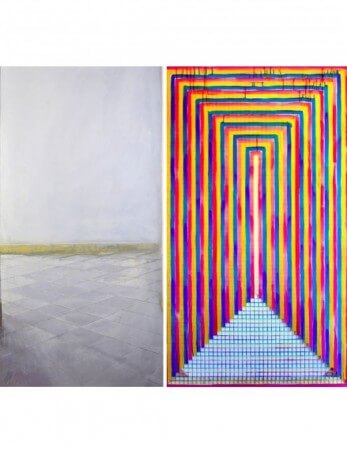
Written on January 9, 2015 at 9:47 am, by Kara Pickman
Organized by Rafael Domenech, Havana-born artist and curator, Binary // Binario features two young artists from Domenech’s alma mater, Havana’s Academia Nacional de Bellas Artes San Alejandro. Ernesto García Sánchez and José Manuel Mesías—both painters—approach their medium in divergent ways: Mesías draws largely on the unique visual quality of an aesthetic rooted in Cuba’s history and its cultural evolution, while Sánchez’s works fall in line with a long tradition of paintings that emphasize the medium itself, revealing the inner workings of the support via delicate cutaways in the canvas.
Autumn Casey, Agalma
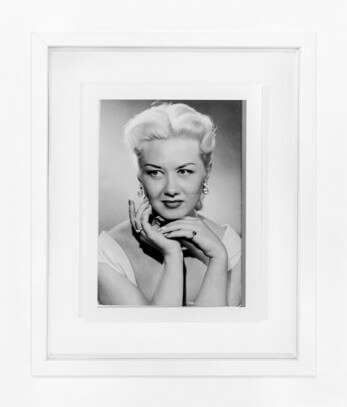
Written on September 17, 2014 at 8:24 am, by Kara Pickman
Agalma begins near the end. In the project gallery, a video called “Elysian Fields” features an elderly woman siting in a chair in the middle of a field, shoulders bare, flowers in her close-cropped hair, singing to Frank Sinatra. She is the artist’s grandmother: former showgirl, current Alzheimer’s patient. Nowadays, she’s only truly herself when she hears the songs of her youth. She emotes, she puckers her lips, she still has beautiful eyes. Sometimes the lyrics flood back. Sometimes she forgets them and you see frustration come across her face like a curtain. Through it all Casey’s camera stays close, shifts in and out of focus, heaving.
Miami Light and Texture
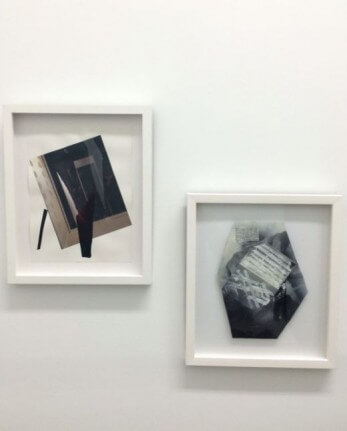
Written on September 5, 2014 at 10:40 am, by Kara Pickman
For her curatorial debút, Kathryn Mikesell of the Fountainhead Residency and Studios selected 115 pieces by local artists influenced by “Miami’s palette, luminosity, and texture.” Seems like a softball pitch, but light and texture is a lot to take on. Down here, it’s up there with Sein und Zeit (right Haden?). That golden hour when the buildings swell, when the light melts flesh like Häagen-Dazs, the grit and rub of stucco and oolite, you know the deal. Calling this city superficial isn’t insulting, it’s taxonomic. But you gotta back it up. To live inside cliché you must be honest.
Poor Happy: Kelly Boehmer, Andrew Nigon, and Carmen Tiffany
Written on August 27, 2014 at 10:16 pm, by Kara Pickman
Handscrawled in pencil near the front windows of the new Swampspace on North Miami (next to Harry’s pizza), Poor Happy is perhaps not the best signage DACRA could have hoped for as the Design District gets thoroughly Bal Harboured. Really, though, this summer group show is less impoverished (and less jovial) than the title belies. All three of the artists are pathetic maximalists, digging through the couch cushions as Saturday morning cartoons blare in the background, coming up with a hoard of cheap or deranged materials that evince a fractured type of American youth.
